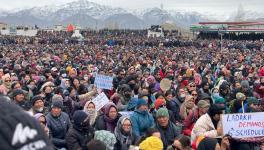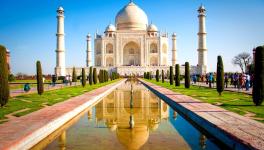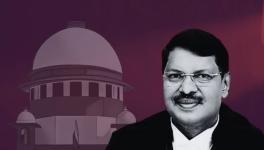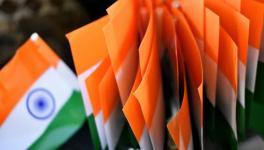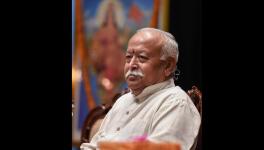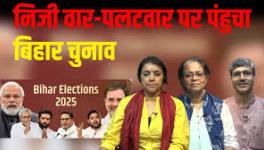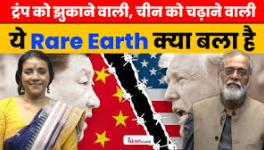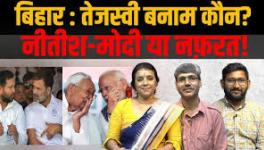Does Only Hindu Society Carry Responsibility in India?

Mohan Bhagwat. Image Courtesy: Wikipedia
“Hindu Society Nation’s Responsible Core -- Sangh seeks to unite Hindu Society, as it is the Hindu Society…that carries the responsibility of Nation” (Mohan Bhagwat, Indian Express, Mumbai Edition, February 17, 2025). These are the words of Bhagwat, the chief of the Rashtriya Swayamsevak Sangh (RSS). He was addressing RSS workers in Bardhaman, West Bengal. He further stated that “Hindus are those who embody India’s characteristics and keep its diverse population united.”
Bhagwat is on a 10-day tour in West Bengal. This formulation is not only in contrast to what the Indian Constitution stands for but is also totally the opposite of what the history of this country tells us.
As per Constitution, “we” the people of India is a religion neutral word and stands for all the people of this country, irrespective of their religion. In contrast to the RSS ideology, the Constitution looks at people of all religions having equal rights and responsibilities in the country.
There is a big attempt by the ideologues supportive of RSS’s Hindu Rashtra ideology to undermine and reject the diversity of religions of this country. The lovely word standing for our mixed culture, ‘Ganga Jamuni Tehzeeb’, is criticised by RSS acolytes, who assert that this is a distortion of the Hindu culture that prevailed here all through.
To begin with, the word ‘Hindu’ itself was coined by those who crossed the Sindhu River, centuries ago. As the word ‘S’ was pronounced less often by them, ‘H’ was instead used by them, so the word Hindu. This stood as a geographical category to begin with; much later the different non-Prophet based religions were lumped together as Hindu.
Minhaz-e-Siraj, a Persian chronicler, first used it in the 13 Century for the area which is at present Punjab, Haryana and the land between Ganga and Yamuna. Politically, it stood for the lands under control of the Delhi Sultanate. In the 14th Century, Amir Khusro, a disciple of Nizamuddin Auliaya, popularised it in the South Asian region.
As such, Asoka, the emperor, who embraced Buddhism and presided over a large empire, adopted the policy of equal treatment to all the prevailing religions of that time -- Vedic (Brahmanism,) Jainism, Ajivikas and Buddhism. Buddhism at that time spread far and wide and was the major religion of the country till Pushyamitra Shung went on the rampage to eradicate it from this land. What prevailed later was many Shramanic traditions, like Nath, Tantra, Shaiva, Siddhanta and later Bhakti, which also became major trends, while Vedic: Brahmanism was most dominant.
The Christian community began with St Thomas establishing a Church on the Malabar Coast in AD 52 and it grew slowly, mainly among adivasis and Dalits. Islam came in 7th Century through Arab traders and later many victims of the caste system also took to Islam. From the 11th Century, many Muslim dynasties ruled from Delhi -- Ghulam, Khilji, Lodhi and finally the Mughals.
Earlier, too, the Shakas and Huns had come here. These interactions between different cultures were the hallmark, and they interacted and influenced each other.
It is during the medieval period that this interaction became more visible. While the two major communities -- Hindus and Muslims -- adopted many aspects of culture, it was not that any ‘one’ religious community was playing the role of the core or primary community and other being subordinate.
The interaction in the matters of language - Persian and Avadhi -- led to formation of Urdu. One interestingly realises that one of the great traditions of Hindu faith, the Kumbh, taking a dip in the Holy river (Ganga, primarily) had a major event called the Shahi Snan, (Royal Bath). Of course, with a Hindu nationalist government in the seat of power now, its nomenclature stands changed to Amrit Snan! (Nectar Bath)
People participated in each other’s festivals with gusto. Holi and Moharram became social events for large parts of society. The Mughal courts celebrated Diwali as ‘Jashna-E-Charagan’ and Holi as ‘Jashn-E Gulabi’.
The peak of this, of course, was the religious traditions, such as Bhakti and Sufi. The followers of Bhakti saints, like Kabir in particular, were both Hindus and Muslims, the Sufi saints’ dargahs were frequented by both Hindus and Muslims. People of all religions visit Velankanni Church.
As the United Nations high level committee on ‘Alliance of Civilisations’ formed by the then Secretary General Kofi Annan, points out, our cultures and civilisations have enriched each other and religions have interacted with each other with a positive spirit.
The freedom struggle against British slavery, where Bhagwat and his ilk were totally absent, was the period of high interaction between people of all religions. We talk of Bhagat Singh and Ashfaq Ullah in the same breath. The Indian National Congress, which led this movement, had Badruddin Tayabji, R M Sayani and Maulana Abul Kalam, who presided over this organisation with great enthusiasm. To cap it all, people of all religions were a part of this struggle. Only the followers of Muslim League, Hindu Mahasabha and RSS kept aloof from this movement that made us a nation. Leaders like Bhagat Singh on the one hand, and Babasaheb Ambedkar on the other, contributed to the inclusive nature of “India: Nation in the making”, a concept that is now being denied by RSS ideologues.
The freedom struggle not only solidified the bonds of togetherness amongst people of different religions but also contributed to enhancement of mixed culture. For organisations like Muslim League and RSS, nationalism is built around the identity of religion.
Gandhi and others contributed to the making of modern India. The values of the freedom movement are part of our Constitution; where there is pluralism and diversity cutting across religions and languages. Mohan Bhagwat is talking of diversity within Hindu society and thinks that only Hindus are the ones who are responsible for this nation!
Bhagwat's ideology of ‘Hindus alone’ is a big handicap for the progress of the country. They claim to follow Vasudhaiva Kutumbakam (The World is One Family) but their actions, training in shakhas through the type of issues, such as Ram Temple, ghar wapasi, love Jihad, ‘cow as mother’ etc., promote hate against the minorities and lead to violence and intimidation of large sections of society.
The World, India included, is a vast garden of rich diversity. To single out only Hindus as those responsible for the country is a divisive statement. All Indians, irrespective of our religion, have rights and have responsibility toward the nation.
The writer is a human rights activist, who taught at IIT Bombay. The views are personal.
Get the latest reports & analysis with people's perspective on Protests, movements & deep analytical videos, discussions of the current affairs in your Telegram app. Subscribe to NewsClick's Telegram channel & get Real-Time updates on stories, as they get published on our website.










